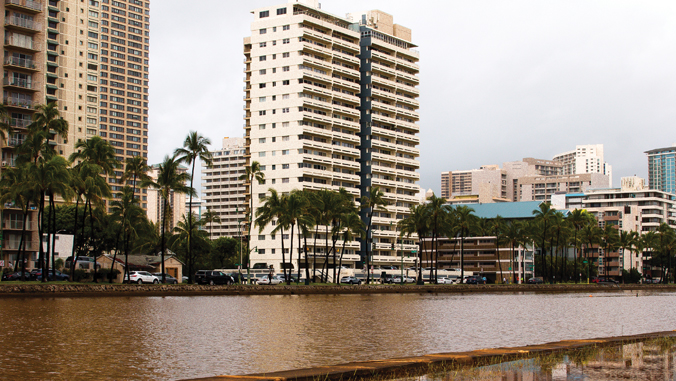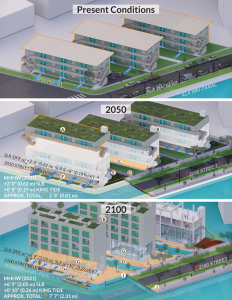
A university of Hawaii Mānoa-led Waikīkī Sea Level Rise Adaptation Project has received national recognition for its architectural innovation that pushes the boundaries of design. The project won a design award from the Society of American Registered Architects (SARA) in New York City in October 2024.

“This national recognition of SARA “underscores the widespread interest in using the latest scientific findings to influence the design of resilient buildings and communities that can change over time,” said Wendy Meguro, director of the School of Architecture and Environmental Research and Design Laboratory the Hawaii Sea Grant Center for Smart Building and Community Design.
In Hawaii, The team was one of four nominees for the Non-Profit or Government Climate Advocate category at Climate Hawaii 2024 Climate Leadership Awards, recognizing his efforts toward decarbonization and resiliency, including research that suggests climate change will require more cooling for multifamily housing in Honolulu.
“It is an honor to contribute to this research that celebrates design innovation and interdisciplinary collaboration to advance meaningful solutions that promote climate resilience and sustainability.” Hawaii future,” said Josephine Briones, UH climate adaptation specialist.
Relocating infrastructure, increasing utility lines, stormwater management

In November 2024, the team's research paper on “Envisioning In-Situ Sea Level Rise Adaptation for Coastal Cities” was published Technology/Architecture + Design. The research outlines a process for combining scientific data with stakeholder input to visualize future flood hazards and promote adaptation planning.
“Successful flood resilience efforts will combine leading practices in planning, climate science and architecture while remaining rooted in local perspectives,” said Melanie Lander, Hawaii Sea Grant Community Planning and Design Extension Agent.
Key strategies examined in the project include relocating critical infrastructure, elevating utilities and sidewalks, and integrating stormwater management systems. These solutions aim to address challenges such as coastal flooding and groundwater flooding while providing scalable models for other communities.
“In their most recent report, they… IPCC stated that … sea level rise after 2100 will continue for centuries to millennia,” said Chip Fletcher, interim dean of the School of Ocean and Earth Science and Technology. “Without policies that plan for and mitigate the impacts of sea level rise, Hawaii It risks becoming unsafe, uninsurable and unaffordable. It is vital that this type of architectural design work continues to build a future in which Hawaii Communities can thrive.”
The project includes Uh Mānoa School of Architecture, Hawaii Sea Grant and the Climate Resilience Collaborative.
